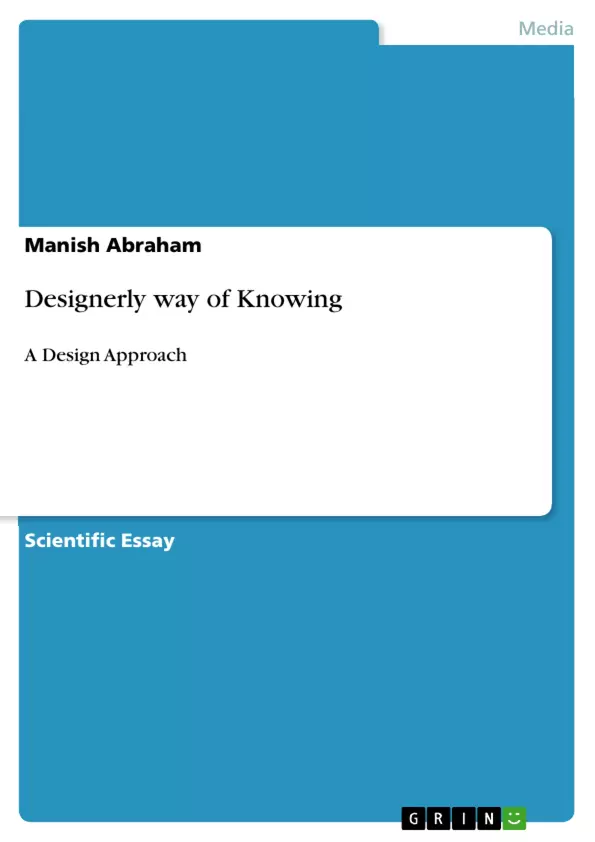The study is to show the various Designerly ways of knowing, to call attention to what might be overlooked as significant forms of design thinking, and to understand and take advantage of the methods that designers use to gain knowledge. The aspects explored are the ways designer’s think and the ways they know, there has been an investigation made for the various approaches. The anticipated goal of this paper is to create a different whole system approach of design knowing. The findings may be useful in understanding how designers gain knowledge.
Inhaltsverzeichnis (Table of Contents)
- Abstract
- Introduction
- Ways of Knowing in Design
- Approaches
- A Whole System Approach of Design Knowing
- References
Zielsetzung und Themenschwerpunkte (Objectives and Key Themes)
This paper explores the unique ways of knowing employed by designers, aiming to highlight often overlooked aspects of design thinking and to understand and utilize the methods designers utilize to gain knowledge. The paper delves into the ways designers think and gain knowledge, investigating various approaches used in the process. The ultimate goal is to propose a novel "whole system approach" to design knowledge.
- Designerly ways of knowing and thinking
- Comparison between design, science, and humanities
- The role of synthesis and problem-solving in design
- The ill-defined nature of design problems
- The active nature of design knowledge
Zusammenfassung der Kapitel (Chapter Summaries)
- Abstract: This section provides a brief overview of the study's purpose, which is to investigate and understand the distinct ways designers acquire knowledge. It highlights the paper's exploration of different design thinking methods and its intention to develop a holistic approach to design knowledge.
- Introduction: The introduction discusses the unique nature of design thinking, emphasizing that designers go beyond simply producing designs but actively engage in shaping situations and futures. The paper's focus is on developing a framework for "designerly ways of knowing," outlining its significance for establishing design as a coherent academic discipline. The introduction contrasts the traditional "two cultures" of science and humanities with the emerging "design culture," emphasizing design's emphasis on innovation and material understanding.
- Ways of Knowing in Design: This section explores the distinctive knowledge base, methods, and practices employed by designers. It delves into how designers approach problems differently from scientists, with a focus on synthesis rather than analysis. The section explores the ill-structured and ill-defined nature of design problems, highlighting the need for designers to actively shape and redefine the problem. It emphasizes that designers actively construct knowledge through their own efforts rather than passively relying on existing data.
Schlüsselwörter (Keywords)
This paper focuses on the unique ways designers acquire knowledge, exploring the differences between design thinking and scientific and humanistic approaches. Key themes include designerly ways of knowing, problem-solving through synthesis, the ill-structured nature of design problems, and the active creation of knowledge by designers.
- Quote paper
- Manish Abraham (Author), 2013, Designerly way of Knowing, Munich, GRIN Verlag, https://www.grin.com/document/209347



